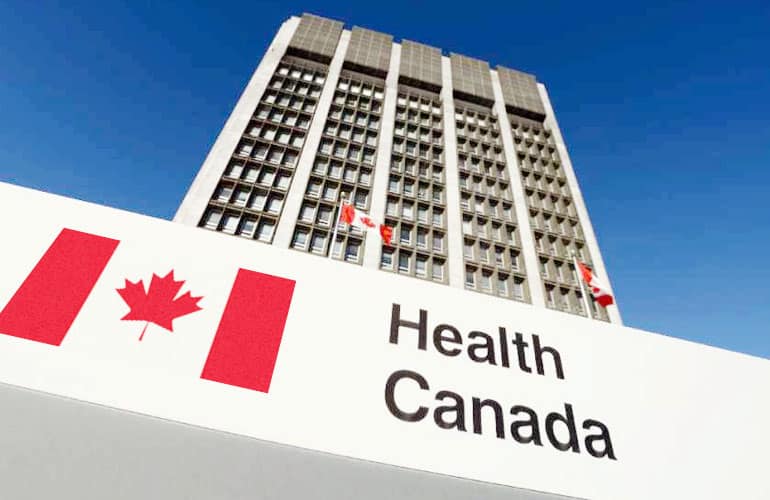The new article describes in detail the recall process, highlighting the most important aspects associated with it.

Table of Contents
Health Canada, a country’s regulating authority in healthcare products, has published a guidance document dedicated to recalls.
The document provides an overview of the applicable regulatory requirements and additional clarifications and recommendations to be considered by medical device manufacturers and other parties involved to ensure compliance with it.
The authority also reserves the right to change the guidance and recommendations provided therein, should such changes be reasonably necessary to reflect corresponding amendments to the underlying legislation.
Medical Device Recall: Introduction
As mentioned in previous articles, the Medical Devices Regulations (MDR) necessitate that manufacturers, importers, and distributors of medical devices establish and implement documented procedures for the effective and timely recall of medical devices.
These procedures are vitally important for ensuring the safety and effectiveness of medical devices in the market.
Overview of Recall Stages
According to the guidance, the recall process is segmented into two main parts: initiating and conducting a recall.
This separation ensures a structured approach, allowing the recalling entity to manage the process efficiently from initiation to communication with consignees and the subsequent steps.
Initiating a Recall
The document further describes in detail how a recall could be initiated, explaining the steps to take by the parties involved:
- Identification of Recall Need
The need to initiate a recall arises upon the realization that a device, including its labeling, could potentially be defective, posing health hazards, failing to meet claims regarding its effectiveness, benefits, or safety, or not complying with the MDR or the Act.
This awareness is often based on information deriving from complaint investigations, quality control audits, or other evaluations. - Development of Recall Strategy and Scope
The formulation of a recall strategy includes such elements as assessing the risk, determining the recall’s depth within the distribution chain, and planning the recall communication.
The relevant strategy should be comprehensive, considering the nature of the defect, the risk to health, and the feasibility of identifying the recalled device and notifying the affected customers.
Conducting a Recall
The second part of the recall process is the actual conduction of a recall to ensure the safety of patients. According to the guidance, it includes:
- Notification and Correction
Once the need for a recall is established, the recalling party must notify the affected consignees and take corrective actions.
This stage is vitally essential for mitigating the risk to health and may include quarantining the affected product, identifying and notifying affected clients, and specifying the method of notification. - Follow-Up Actions
Following the initial notification and corrective actions, companies must follow up to ensure the recall’s effectiveness.
This involves evaluating the recall’s success, taking remedial actions if necessary, and managing the disposition of the affected product. - Review and Closure of Recall
The final stage of the recall process involves a comprehensive review to confirm that all actions have been completed satisfactorily and the recall can be closed. This includes submitting a final recall report to Health Canada and documenting the closure of the recall.
Critical Components of the Recall Process
In addition to the two main stages described hereinabove, the present guidance also elaborates on the critical components of the recall process, including, among other things, the following ones:
- Evaluating Risk and Significant Change
A critical aspect of developing a recall strategy is the evaluation of risk associated with the defective device and assessing any significant changes that the recall actions might entail, especially for Class III and IV devices. - Depth of Recall Within the Distribution Chain
Determining the extent of the recall within the distribution chain is essential for ensuring that all potentially affected products are accounted for and addressed. - Timeliness and Recall Communications:
Setting clear timelines for recall actions and defining the content and method of recall communications are vitally important for effectively managing the recall process.
Conclusion
The present guidance issued by Health Canada describes in detail the main stages of a recall process to ensure patients’ safety and public health protection in general.
The document outlines the key steps to be taken and pays special attention to additional considerations impacting the effectiveness of recall actions.
How Can RegDesk Help?
RegDesk is a holistic Regulatory Information Management System that provides medical device and pharma companies with regulatory intelligence for over 120 markets worldwide. It can help you prepare and publish global applications, manage standards, run change assessments, and obtain real-time alerts on regulatory changes through a centralized platform. Our clients also have access to our network of over 4000 compliance experts worldwide to obtain verification on critical questions. Global expansion has never been this simple.
Want to know more about our solutions? Speak to a RegDesk Expert today!
–>
- SEO Powered Content & PR Distribution. Get Amplified Today.
- PlatoData.Network Vertical Generative Ai. Empower Yourself. Access Here.
- PlatoAiStream. Web3 Intelligence. Knowledge Amplified. Access Here.
- PlatoESG. Carbon, CleanTech, Energy, Environment, Solar, Waste Management. Access Here.
- PlatoHealth. Biotech and Clinical Trials Intelligence. Access Here.
- Source: https://www.regdesk.co/health-canada-guidance-on-medical-device-recalls-process-explained/




